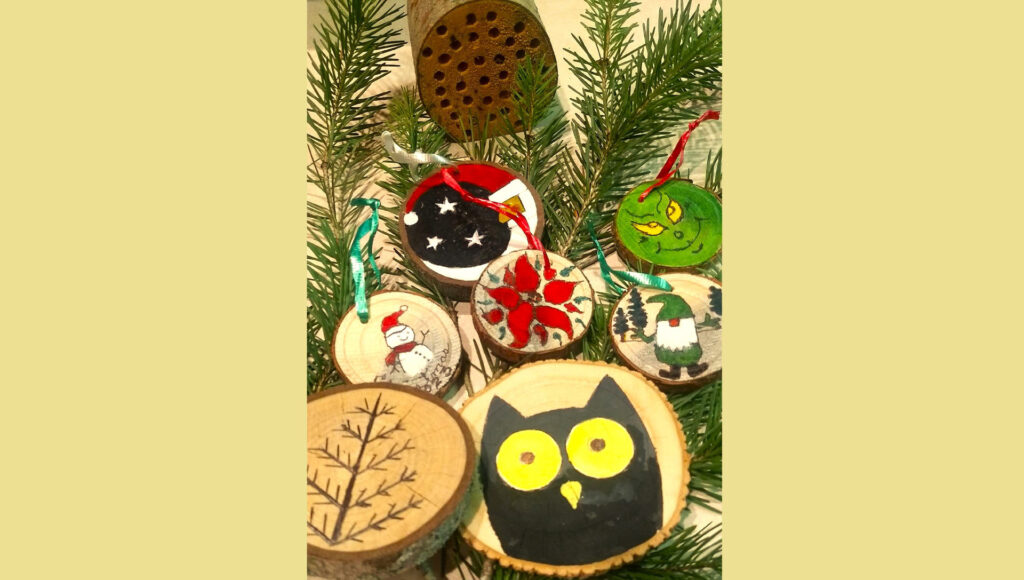
By William Summers, Washington County Master Gardener
It’s a New Year, you are considering taking down those Christmas decorations, and you are facing the big question: What to do with the tree? That’s easy if you have an artificial tree because you merely have to take it apart and try to return it to the storage box or tub for another year. About one-third of Americans still use a real tree. This article shares with you the nearly infinite possibilities of uses that best fit your “real tree” disposal wishes.
Here’s what to do:
Recycling — Your live Christmas tree, minus the ornaments and wiring is wholly biodegradable. Contact your local municipality for recycling at your community’s composting facility. For instance, the City of Nashville will be picking up used Christmas trees at curbside. They are good for chipping, mulching and composting for various community uses around you.
Fish Habitat — Contact the US Army Corps of Engineers, Carlyle Lake and Rend Lake to use your tree for fish habitat in nearby communities through the end of the year. For more information, please call Carlyle Park at 618-594-2484 or Rend Lake Visitors Center at 618-724-2493. These trees contribute to improving fisheries habitat at several locations around the lakes.
Tree Mulch — Your tree can be mulched and placed in your flowerbeds. Tree stems with needles benefit flower and vegetable gardens as paths between rows or plantings. USDA reports that pine needles have a pH of approximately 4.0 for acid-loving plants like azaleas and rapidly decompose to add soil fertility and conserve moisture.
Landscape Uses — Strip the branches and stick them in the ground as natural plant stakes for the weak stems of tall flowers in your gardens next summer. Short sections of the trunk with limbs cut short make interesting ways to stagger the height of your plants when arranged in groups.
Bird Habitat — Save the tree on the tree stand made of sand or gravel and water and allow it to freeze for hanging bird feeders and suet feeders. The thick branching protects feeding birds during the cold winter months to come. Even better, leave the string of popcorn and cranberries on the tree if you still decorate with them!
Future Holiday Decorations — Get creative and turn the tree trunks into creative gifts. Thin slices through the trunk may be decorated with this year’s date, painted or wood-burned and used in next year’s Christmas decorations and gifts. Thin, decorated slices make charming, personalized and interesting coasters and trivets. This is a creative craft to engage children.
Bee Scrapes — Holes drilled in short, 3-inch trunk lengths are effective homes and rearing places for mason bees and other (non-stinging) bee pollinators. Holes should be 1/4 to 3/8 inches in diameter and 2 inches deep. You will be amazed at seeing the holes filled with mud as homes for later bee offspring. Please be creative and share these with friends.
Sachet — Soak conifer needles in a bowl of water to add a fragrant pine aroma to your home long after your tree is gone.
Tree Replacement — Last, but not least, consider planting a balled and burlap, live Christmas tree next year. Trees have an essential place in the environment, not only for appearance but for the shade and habitat they produce. Consider adding white pine, spruce or fir to your lawn planting or to share with a friend after the season is passed. For information on trees go to https://extension.illinois.edu/christmas-trees/selecting-christmas-tree.
Caution — Burning pieces of your Christmas trees should be left in outdoor fire pits and not your wood stoves or fireplaces. Dried trees may increase creosote, tar hazards, or soot accumulations, which in turn increase the risk of flu fires that endanger homes.
We hope you’ll share these simple suggestions with your neighbors and friends. For more garden and landscaping information, please contact a local Master Gardener or your local University of Illinois Extension Office. https://extension.illinois.edu/bcjmw. Please have a happy and successful year gardening in Southern Illinois communities.




